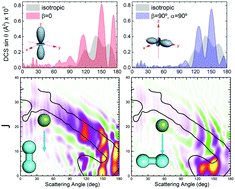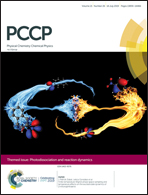How reactant polarization can be used to change the effect of interference on reactive collisions
Abstract
It is common knowledge that integral and differential cross sections (DCSs) are strongly dependent on the spatial distribution of the molecular axis of the reactants. Hence, by controlling the axis distribution, it is possible to either promote or hinder the yield of products into specific final states or scattering angles. This idea has been successfully implemented in experiments by polarizing the internuclear axis before the reaction takes place, either by manipulating the rotational angular distribution or by the Stark effect in the presence of an orienting field. When there is a dominant reaction mechanism, characterized by a set of impact parameters and angles of attack, it is expected that a preparation that helps the system to reach the transition state associated with that mechanism will promote the reaction, whilst a different preparation would generally impair the reaction. However, when two or more competing mechanisms via interference contribute to the reaction into specific scattering angles and final states, it is not evident which would be the effect of changing the axis preparation. To address this problem, throughout this article we have simulated the effect that different experimental preparations have on the DCSs for the H + D2 reaction at relatively high energies, for which it has been shown that several competing mechanisms give rise to interference that shapes the DCS. To this aim, we have extended the formulation of the polarization dependent DCS to calculate polarization dependent generalized deflection functions of ranks greater than zero. Our results show that interference is very sensitive to changes in the internuclear axis preparation, and that the shape of the DCS can be controlled exquisitely.

- This article is part of the themed collections: 2019 PCCP HOT Articles, Photodissociation and reaction dynamics and 2018 PCCP HOT Articles


 Please wait while we load your content...
Please wait while we load your content...